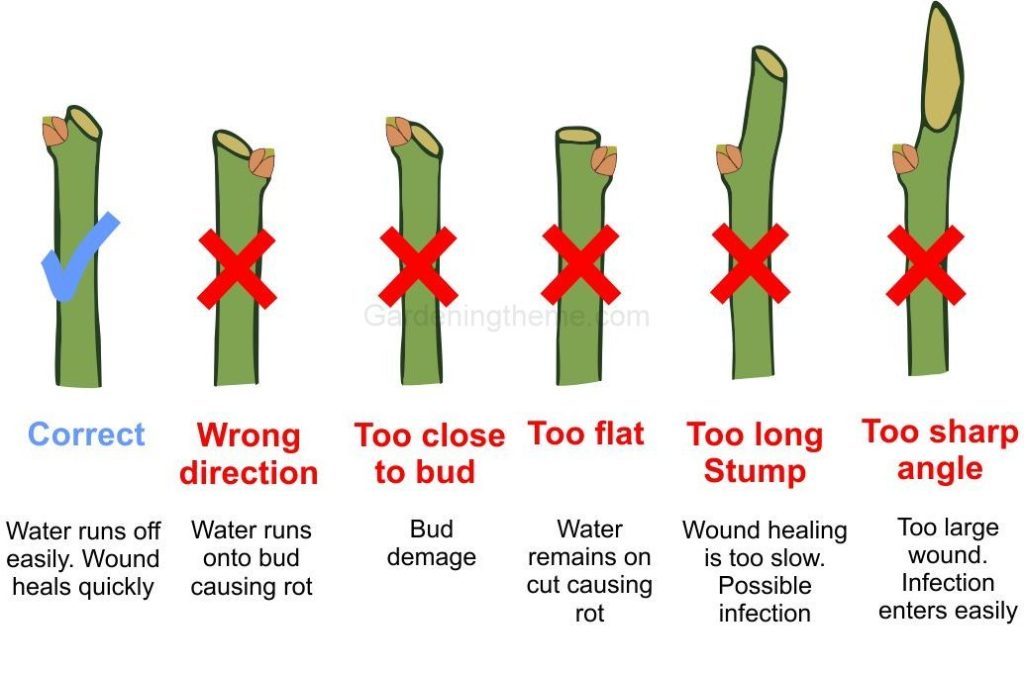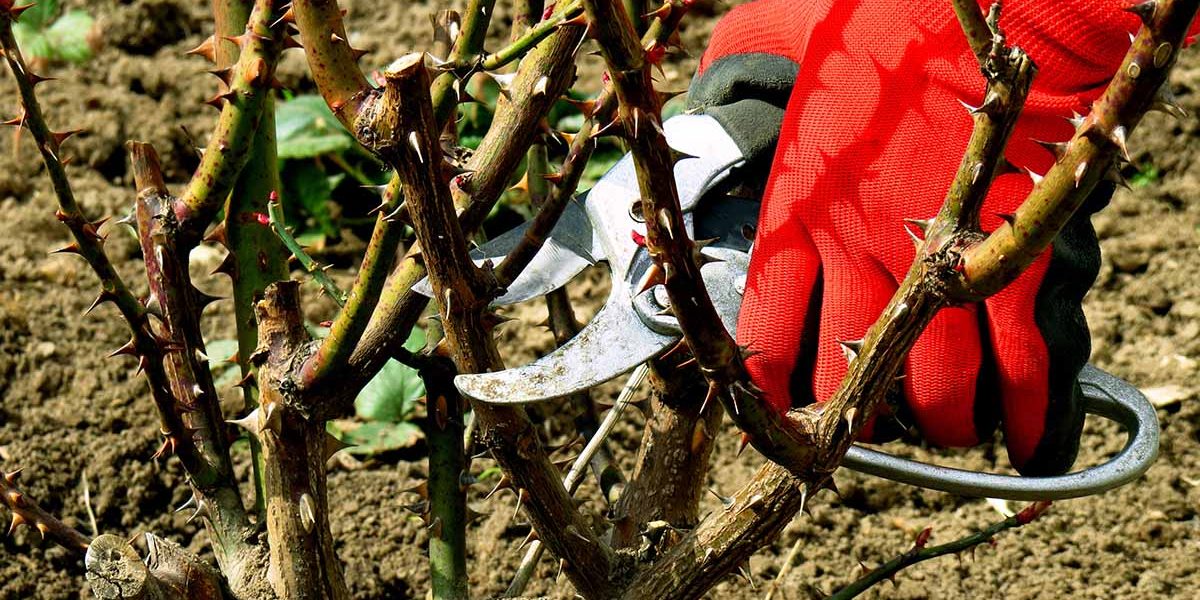Pruning roses in the correct time is important for encouraging strong growth and vibrant blooms. The ideal time is late winder or early spring, just as the plant begins to wake back up. This is usually after the time when buds start to swell but before new growth.
You will also need the right tools, which should be something like this:
Bypass pruners are sharp and precise, perfect for cutting smaller stems and branches. You might also need long handled loppers for thicker branches and stems which are harder to reach. Gardening gloves are very important so you can protect your hands from thorns and irritation, and disinfectant is required to disinfect tools between cuts, so you don’t spread pathogens. Rubbing alcohol or a diluted bleach solution will work well.
Inspect the rose bush for any dead, damaged or infected wood. Dead wood should appear brown and dry, with no green tissue when cut through. It should be removed completely, cutting back to healthy tissue.
Diseased wood can have discolouration, lesions, or fungal growth. If you spot any, cut away the affected area and dispose of them. Make sure not to compost diseased material. Make sure to prune back to live, healthy tissue. This ensures that the plant’s energy is not wasted on dead or unhealthy branches.
When pruning, always try to cut just above an outward facing bud. This will encourage the plant to grow outward, helping the bush create an open shape. Pruning at a 45 degree angle allows for better water flow, preventing water from collecting on the cut. Prevent making cuts too close to the bud, a quarter of an inch of space is fine.

Roses need airflow to prevent infections and increase healthy growth. Thinning out crowded areas makes sure that sunlight can reach all parts of the plant. Look for branches that cross over or rub. These can cause damage, opening entry points for diseases. Look for areas where the plant is growing too dense or uneven and remove any weak growth. A balanced shape will help the bush direct its energy to strong and healthy stems.
After pruning, roses can benefit from nutrients to support their recovery and encourage new growth. Apply a balances fertilizer suited to roses, following the specific instructions. Mulching around the base of the rose can help moisture, suppresses weeds, and insulates the roots from extreme temperatures. Use mulch such as shredded bark or compost, and avoid piling it directly against the plant’s stems to prevent rot.
At Grasshopper Garden Services, we can make sure that your garden is at its full potential.

